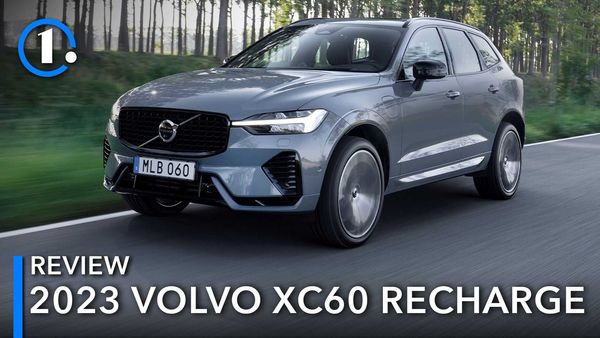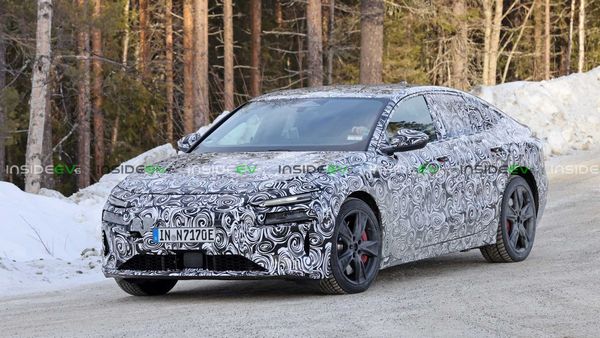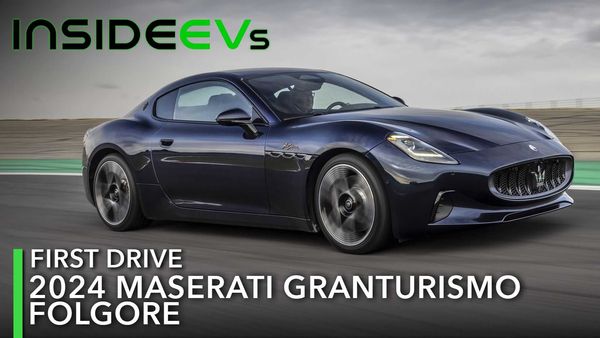
Design | Comfort | Tech | Performance | Safety | Fuel Economy | Pricing | FAQs
Hulking, high-end, and exorbitantly priced is no longer the exclusive domain of Rolls-Royce under the BMW Group umbrella. The 2023 BMW 7 Series and the electric i7 borrow a handful of tricks from their cousins in Goodwood, easily earning them the title of the most upscale 7ers ever built.
The electric BMW i7 I drove was loaded to the brim with lavish features like automatic closing doors, reclining rear seats with massage functions, and a massive rear touchscreen that folds down from the roof, allowing you to stream your favorite shows and movies. It’s pricey, sure – but BMW went all out with the new 7 Series and it really shows.
A vehicle's verdict is relative only to its own segment and not the new-vehicle market as a whole. For more on how Motor1.com rates cars, click here.
| Quick Stats | 2023 BMW i7 xDrive60 (21-Inch Wheels) |
| Motors: | Two Synchronous Induction Motors |
| Output: | 536 Horsepower / 549 Pound-Feet |
| 0-60 MPH: | 4.5 Seconds |
| EV Range: | 308 Miles |
| Trim Base Price: | $120,295 |
Gallery: 2023 BMW i7: Review







- Exterior Color: Frozen Deep Grey
- Interior Color: Smoke White
- Wheel Size: 21 Inches
I'll be blunt: the BMW i7 does not look good. While the base model at least has some style with cleaner elements and traditional chrome, the M Sport model ups the ugly factor with gloss black trim, an overly angular bumper, and a bunch of vents. The front end of this car is brutal to look at, but the Frozen Deep Grey paint at least helps hide some of that face… assuming you want to spend an extra $5,000.
The i7 earns some points here, though, because of how damn lovely the interior is. The Smoke White Merino leather mixes effortlessly with carbon fiber trim and crystal fixtures. In fact, there's more crystal here (faux and real) than in a Swarovski store; the shifter, infotainment controller, and seating controls are crystalized. There's even a faux crystal plastic fixture dubbed the “Interaction Bar” that runs horizontally across the dash. The Interaction Bar houses a handful of touch-capacitive buttons behind it and it's a beautiful accent to a cabin that already looks and feels well premium.
- Seating Capacity: 5
- Seating Configuration: 2 / 3
- Cargo Capacity: 17.6 Cubic Feet
The i7 is just about as comfy as its cousin, the Rolls-Royce Ghost. The biggest draw here, though, is that there's no pesky gas engine to pollute the cabin with sound. The i7 is totally silent when accelerating and offers excellent deadening even at highway speed.
The Merino leather thrones are exceptionally cushy on my backside and come with heating, cooling, and multiple massage functions as part of the $6,550 Executive package. The $7,250 Rear Executive Lounge seats are even better than the front chairs; they're also heated, cooled, and massage capable (all for an extra $600), and come with a generous recline function with a footrest.
But the thing I loved most was the automatic doors. Available as part of the Executive package, all you need to do is hop into the driver's seat, press the brake pedal, and the BMW shuts all the doors for you. There's also an option within that touchscreen and “Hey, BMW” voice control functionality that allows you to close or open all four doors as you choose.
- Center Display: 14.9-Inch Touchscreen
- Instrument Cluster Display: 12.3 Inches
- Wireless Apple CarPlay / Android Auto: Yes
Every i7 gets a 14.9-inch touchscreen with a corresponding 12.3-inch digital instrument cluster, both running BMW's latest iDrive 8 interface. As on the iX, this setup is clear, concise, and mostly easy to use. But with some of the additional features found in the i7 – things like closing the blinds or activating the rear screen – digging through the extensive options list is annoying, especially while driving. A few more buttons would do the i7 good.
The best place to sit is the back seat thanks to the massive 31.3-inch 8K video screen that juts out from the ceiling. It comes with baked-in Amazon Fire TV that has Hulu, Netflix, and YouTube, as well as a high-speed 5G connection. There are also two tiny 5.5-inch screens on door panels that allow each of the rear passengers to control things like the climate settings, seating positions, and even the music throughout the entire vehicle.
And there's still a bevy of other technology beyond that. The $4,800 Bowers & Wilkins Diamond surround sound system is excellent, the head-up display is sizable with ample info, and just like on the iX, there's an interior camera for in-car selfies.
- Motor: Dual Permanent-Magnet Synchronous
- Output: 536 Horsepower / 549 Pound-Feet
- Transmission: Single-Speed Automatic
The i7 doesn't pack quite a punch like the Lucid Air or Tesla Model S, but its 536 horsepower and 549 pound-feet of torque are more than enough kick for the luxury sedan to hit 60 miles per hour in 4.5 seconds. It's a quick vehicle for its size, and relatively agile too, thanks to a near-perfect 50/50 weight distribution and an active suspension that keeps it as composed in the corners as a 5,917-pound, 17-foot-long EV can be.
Shift the crystalized dial into “B” mode to activate one-pedal driving. I found it to be one of the most aggressive one-pedal driving systems out there; it brings the i7 down to speed and to a complete stop with force.
- Driver Assistance Level: SAE Level 2 (Hands-Off)
- NHTSA Rating: Not Rated
- IIHS Rating: Not Rated
The i7 is the first BMW in the US with the new Driving Assistant Plus hands-free safety system. When it works, it’s excellent. Akin to GM’s Super Cruise or Ford’s BlueCruise, BMW’s hands-free system automatically activates on a select number of highway systems throughout the US and offers steering, braking, and acceleration inputs depending on the flow of traffic. I felt comfortable keeping my hands off the wheel over long stretches of highway and letting the i7 handle most of the legwork.
That said, my issue with this system is that it feels less eager to activate than Super Cruise or BlueCruise on some of the same roads I’ve tested those former two. I ticked the hands-on Driving Assistant and waited for the “Plus” feature to kick on, sometimes to no avail.
- EV Range: 308 Miles
- Battery Size: 105.7-Kilowatt-Hour Lithium-Ion
- Peak DC Charging Rate: 195 Kilowatts
The BMW i7 actually has three different EPA range figures depending on how you spec it. The base model with 19-inch aero wheels can drive up to 318 miles on a charge, the M Sport model with 21-inch wheels (tested here) goes 308 miles, and the M Sport model with the 20-inch wheels – oddly enough – has the worst range at 296 miles.
- City: 80 MPGe
- Highway: 72 MPGe
- Combined: 76 MPGe
The i7 is pricey, even in a class that includes Lucid, Tesla, Porsche, and other high-dollar vehicles. It starts at $120,295 with the $995 destination fee included and gets extremely expensive post options. The car I tested costs $156,595 with the priciest extras being the $7,250 Executive rear seats, the $6,550 Executive package, the $5,450 Alcantara headliner, and the $5,000 Frozen paint. I suggest you save yourself a few thousand dollars and forgo the fancy headliner and paint – the i7 is already plenty posh enough without them.
By comparison, the base Tesla Model S starts at $96,380. That car has 134 more horses than the i7 and 87 more miles of range. The Lucid Air Touring starts at $107,400 and has 84 more horses and over 100 more miles of range, too. The BMW comes closer to the Mercedes EQS and Audi E-Tron GT in terms of price and performance, but it’s still on the upper end of the segment.
| Pricing: | Trim Base Price: | Competitive Spec: |
| BMW i7 xDrive60 | $120,295 | $156,595 |
| Audi E-Tron GT Prestige | $112,795 | $125,290 |
| Lucid Air Touring | $107,400 | $134,900 |
| Mercedes-Benz EQS | $126,950 | $133,760 |
| Porsche Taycan 4S | $107,950 | $151,510 |
| Tesla Model S | $96,380 | $111,380 |











